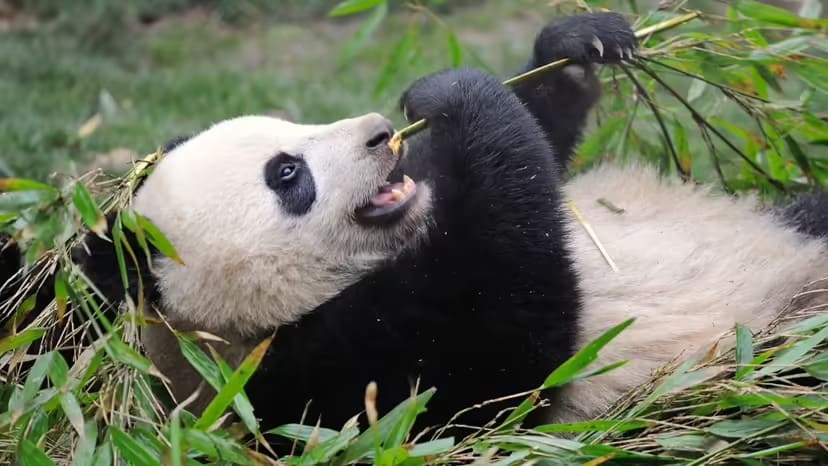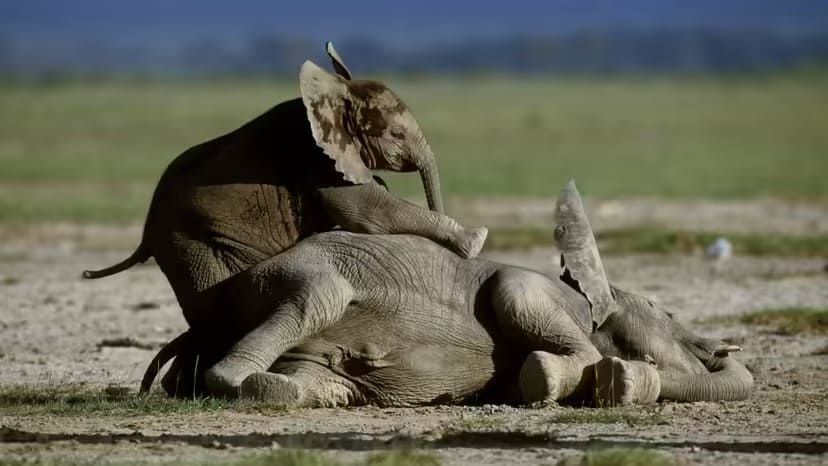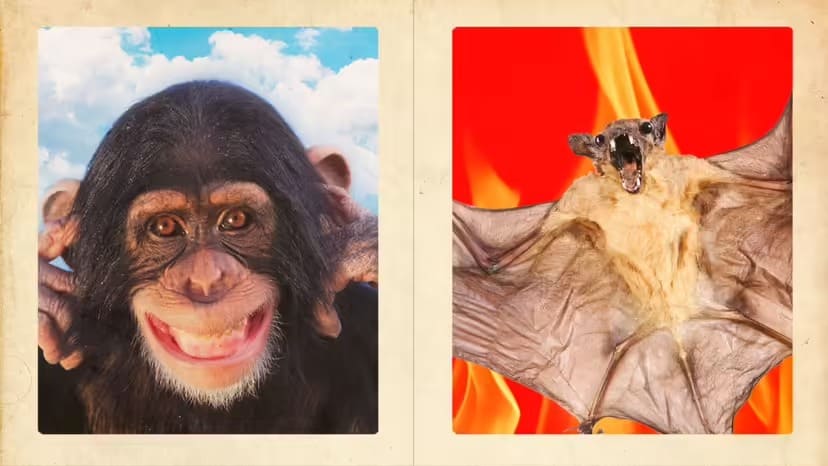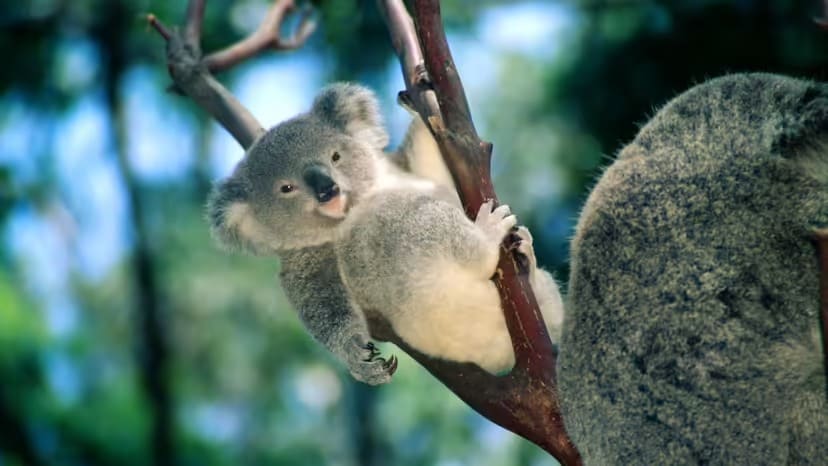One-sentence take: “Charismatic megafauna” (aka flagship species) are large, highly appealing animals—think giant pandas, lions, tigers, gorillas, Elephants-Are-Endangered.html">elephants, dolphins, penguins, otters—used as public ambassadors to mobilize attention, funding, and policy. Done well, they create an umbrella effect that protects entire ecosystems, not just the star species. Done poorly, they can distort priorities. The fix: use the star to fund the system—habitat quality and connectivity—then measure outcomes beyond likes and donations.

Charismatic megafauna / Flagship species
Popular, easily recognized species used as campaign ambassadors to raise awareness and funds.
Keystone species
Species whose ecological impact is disproportionately large relative to their abundance (e.g., top predators, habitat “engineers,” key pollinators).
Indicator species
Species that signal ecosystem condition (e.g., declining crayfish indicating freshwater pollution).
A flagship can be keystone or indicator—but the flagship role is about mobilization, not necessarily ecological centrality.
High recognition + cute/relatable behavior → more clicks, shares, volunteers, and donations.
Protecting a flagship’s habitat and movement corridors safeguards many co-occurring plants, insects, reptiles, amphibians, birds, and small mammals. One investment, many beneficiaries.
Star species attract long-term monitoring, field sites, and tech (remote sensing, camera traps, eDNA). These assets spill over to less visible species.
Classic examples
Giant panda → drove reserve expansion, logging bans, and corridor planning in western China; collateral benefits to snub-nosed monkeys, takin, pheasants, alpine flora.
Elephants → front anti-poaching and trade policies that also aid rhinos, big cats, and even marine flagships.
Bald eagle → anti-DDT movement success transformed raptor conservation and pollution policy.

Story & funding: Flagship provides a simple, sticky narrative for complex problems (habitat loss, climate shifts, illegal trade).
Policy & management: Momentum enables logging restrictions, protected-area upgrades, corridor build-outs, and community co-management.
Ecological wins: When money lands on habitat quality, connectivity, and threat reduction, the non-stars benefit too.
Attention bias: Over-focus on large mammals; freshwater mussels, amphibians, invertebrates, and plants get sidelined even when more threatened.
“Star ≠ keystone”: Saving a non-keystone flagship without fixing system-level stressors may not restore function.
Cultural variance: Charisma isn’t universal; what’s cute in one region can be feared in another.
Over-simplified messaging: Reducing systemic issues to “adopt an animal” can mislead if not tied to ecosystem outcomes.

Tell an ecosystem story, not just an animal story. Always answer: “Protecting this species = protecting which habitat/corridor?”
Set hard ecological KPIs. Track habitat area restored (ha), corridor kilometers connected, roadkill/poaching reduction, grazing pressure, not just views or dollars raised.
Budget for the “little guys.” Use the flagship to attract funds, then allocate by ecological function, threat status, and cost-effectiveness to co-occurring species.
Target bottlenecks. Invest in small, high-ROI fixes at choke points (culverts, overpasses, riparian plantings, sandbar recovery, fence retrofits).
Co-manage with communities. Bake compensation, alternative livelihoods, and eco-tourism revenue-sharing into agreements for long-term compliance.
Communicate responsibly. Avoid cutesy messages that promote feeding/touching or unsafe behavior; include “how to coexist” guidance.
Build integrated monitoring. Combine satellite data + camera traps + eDNA + social science; publish annual dashboards and open data.
De-risk the portfolio. Let flagships acquire donors, but also run a system fund for low-profile, high-need taxa and habitats.

A) Campaign package
Hero visual: flagship portrait + behavior clips
Habitat map: core areas & corridors overlaid with roads/dams/grazing pressure
Co-benefit list: 5–10 lesser-known species and how they benefit
Action panel: donation tiers (hectares restored / meters of corridor / anti-poaching hours), volunteer & citizen-science links
B) Outcome metrics (examples)
Habitat restored (ha), corridor connectivity (km)
Threat reduction (illegal activity, roadkill, stocking rates, fire frequency)
Co-occurring species trends (camera-trap rates, nesting success)
Community outcomes (households engaged, revenue share, compliance rates)
C) Annual transparency
Map-based report + 3-minute progress video + public dashboard
Panda (flagship) → Qinling/Minshan: logging bans + corridors improved montane forest integrity for multi-species guilds.
Elephant (flagship) → East & Southern Africa: anti-poaching/market controls, transfrontier parks, spillovers to rhinos/big cats.
Bald eagle (flagship) → North America: DDT ban success; raptor recovery + stronger pollution controls.
Does focusing on stars harm the small, imperiled species?
It can—if funds stop at the star. When investments target habitat quality, connectivity, and threat reduction, the umbrella effect lifts many taxa.
If a flagship isn’t a keystone, is it worth protecting?
Yes—as a lever. The point is to use its appeal to fund system-level fixes that benefit entire communities.
Charisma varies across cultures—how do we pick a flagship?
Choose locally resonant species and keep messaging tied to ecosystem context and co-benefits.
Can we campaign without “cute”?
Yes—by framing ecosystem functions (pollination, shoreline stability, groundwater recharge) or constructing charisma via storytelling. Expect lower initial conversion than with classic flagships.
Donate to programs that fund corridors, habitat restoration, anti-poaching, and grazing management—not just symbolic adoptions.
Choose responsible zoos/aquariums (accredited; active in studbooks, reintroductions, and habitat projects).
Join citizen science: upload camera-trap/observation data; help monitor roadkill or invasive species.
Share the right message: “The star is the doorway; the ecosystem is the goal.”
Sources
Boal, Amy. "The Most Charismatic Megafauna." Ranker. 2017 (March 19, 2017) http://www.ranker.com/list/most-charismatic-megafauna/amylindorff
Braccini, Stephanie, PhD. Zoo Atlanta. Email interview. March 13, 2017.
Ducarme, Frédéric; Gloria M. Luque, Franck Courchamp. "What are 'charismatic species' for conservation biologists?" Biosciences Master Reviews, July 2013 (March 19, 2017) http://biologie.ens-lyon.fr/ressources/bibliographies/pdf/m1-11-12-biosci-reviews-ducarme-f-2c-m.pdf?lang=fr
The Economist. "Branding Land." Jan. 7, 2008 (March 23, 2017) http://www.economist.com/node/10486391
Endangered Earth. "The Plight of Endangered Species." 2017 (March 19, 2017) http://www.endangeredearth.com/
Gunnthorsdottir, Anna. "Physical Attractiveness of an Animal Species as a Decision Factor for its Preservation." Anthrozoos. 2001 (March 21, 2017)
Gunnthorsdottir, Anna. "Physical Attractiveness of an Animal Species as a Decision Factor for its Preservation." Anthrozoos. 2001 (March 21, 2017) http://www.tandfonline.com/doi/abs/10.2752/089279301786999355?journalCode=rfan20
International Union for Conservation of Nature. "Flagship species: How protecting rhinos can help other threatened wildlife." Sept. 22, 2014 (March 19, 2017) https://www.iucn.org/content/flagship-species-how-protecting-rhinos-can-help-other-threatened-wildlife
Marris, Emma. "Charismatic Mammals Can Help Guide Conservation." Nature. Dec. 24, 2013 (March 19, 2017) http://www.nature.com/news/charismatic-mammals-can-help-guide-conservation-1.14396
Marris, Emma. "Charismatic Mammals Can Help Guide Conservation." Nature. Dec. 24, 2013 (March 19, 2017) http://www.nature.com/news/charismatic-mammals-can-help-guide-conservation-1.14396 Robinson, Katherine and Monica Krause. "Charismatic Megafauna and Beyond." Discover Society. Oct. 4, 2016 (March 19, 2017) http://discoversociety.org/2016/10/04/charismatic-megafauna-and-beyond/
Schlegel, Jürg and Reto Rupf. "Attitudes towards potential animal flagship species in nature conservation: A survey among students of different educational institutions." Journal for Nature Conservation. Dec. 2010 (March 23, 2017) https://www.researchgate.net/publication/248907611_Attitudes_towards_potential_animal_flagship_species_in_nature_conservation_A_survey_among_students_of_different_educational_institutions
Simmons, Christina. San Diego Zoo Global. Email interview. March 8, 2017.
U.S. Fish & Wildlife Service. "Bald Eagles." 2017 (March 22, 2017) https://www.fws.gov/midwest/Eagle/recovery/index.html
World Wide Fund for Nature. "Global Species Programme: how WWF classifies species." 2017 (March 23, 2017) http://wwf.panda.org/about_our_earth/species/flagship_keystone_indicator_definition/#indicators
World Wildlife Fund. "Wild pandas get a boost." World Wildlife Magazine. Spring 2017 (March 20, 2017) https://www.worldwildlife.org/magazine/issues/spring-2017/articles/wild-pandas-get-a-boost--2
animal tags:
We created this article in conjunction with AI technology, then made sure it was fact-checked and edited by a Animals Top editor.